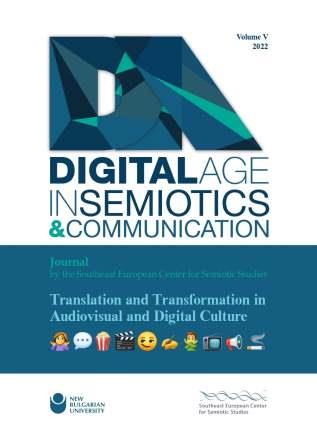The cinefication of museums: from exhibitions to films. The case of Tate Modern
The cinefication of museums: from exhibitions to films. The case of Tate Modern
Author(s): Aluminé RossoSubject(s): Philosophy, Language and Literature Studies, Fine Arts / Performing Arts, Museology & Heritage Studies, Semiotics / Semiology, Library and Information Science, Visual Arts, Theoretical Linguistics, Semiology, Film / Cinema / Cinematography
Published by: Нов български университет
Keywords: modern art museums; museums communication; semiotics of space; contemporary art exhibitions; cinema; cultural industries; exhibitions trailers
Summary/Abstract: Since the end of the 20th century, museum institutions have been adopting the logic of communication, promotion, and administration typical of cultural industries, mainly Cinema. In 1994, Andreas Huyssen argued that the museum, as an elitist place of preservation of canon and high culture, gave way to the museum as a mass medium. Cinema became the paradigm of contemporary cultural activities whose new exhibition practices respond to the changing expectations of the public and their constant search for stellar events.This process is evident in the increasing use of banners, marquees, and all manner of resources aimed at promoting the temporary exhibitions gaining their place as the main attractions of art museums. Moreover, with the advent of social media, the phenomenon of cinefication of the museum has accelerated. Exhibitions are now titled, conceived, promoted, and distributed as films, while artists, adorned by the figure of the genius, are presented as parts of the art history star system.In order to highlight this phenomenon, we present an analysis of the programming and promotion of temporary exhibitions at Tate Modern, the paradigm of 21st-century museums. This institution not only titles its exhibitions in a cinematographic manner but also produces trailers and posts them on its website and social media. Our work focuses on one exhibition in particular: Picasso 1932, Love, Fame, Tragedy. To this end we observed both the curatorial discourse and the communication strategies applied by Tate. This paper is part of a research project that includes MoMA, Malba, Centre Pompidou, and Reina Sofia. The study of this phenomenon will provide an overview of the epochal style of modern art museums in the conception and communication of modern and contemporary art exhibitions.
Journal: Digital Age in Semiotics & Communication
- Issue Year: V/2023
- Issue No: 1
- Page Range: 35-61
- Page Count: 27
- Language: English

